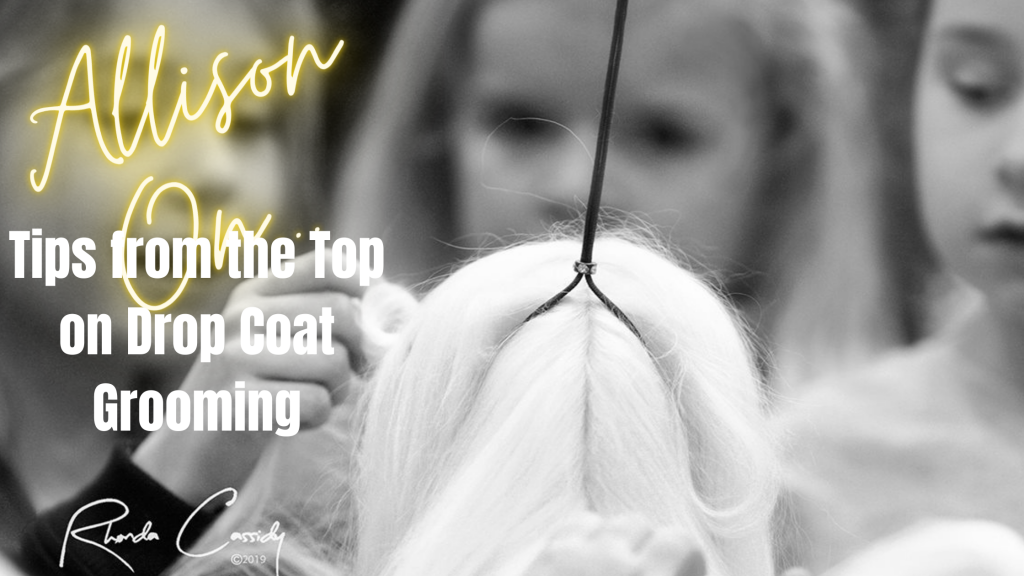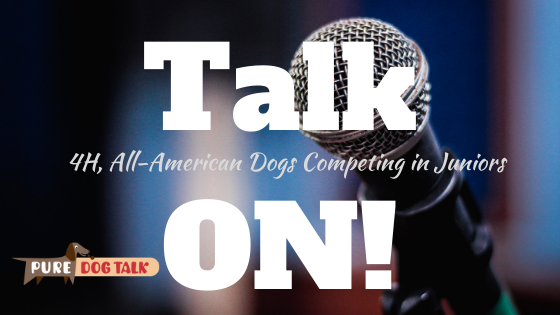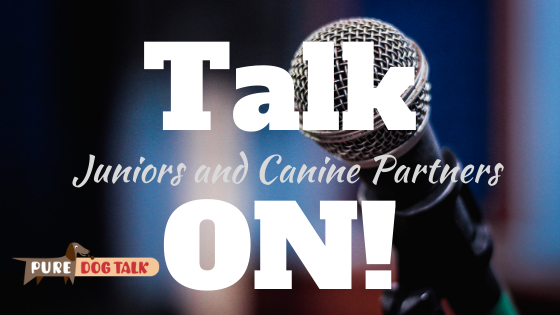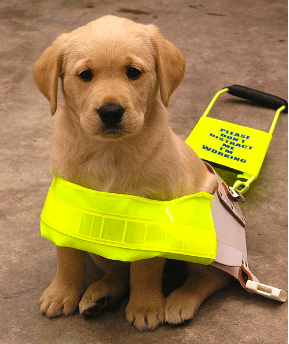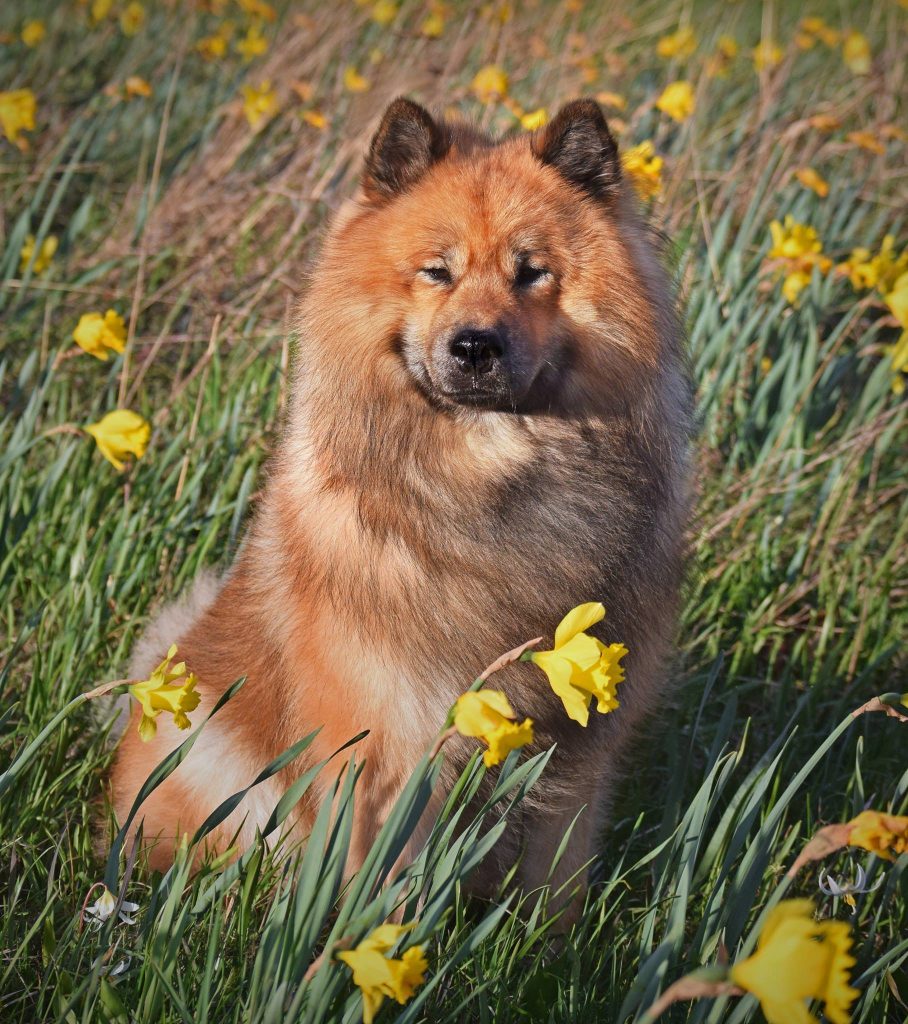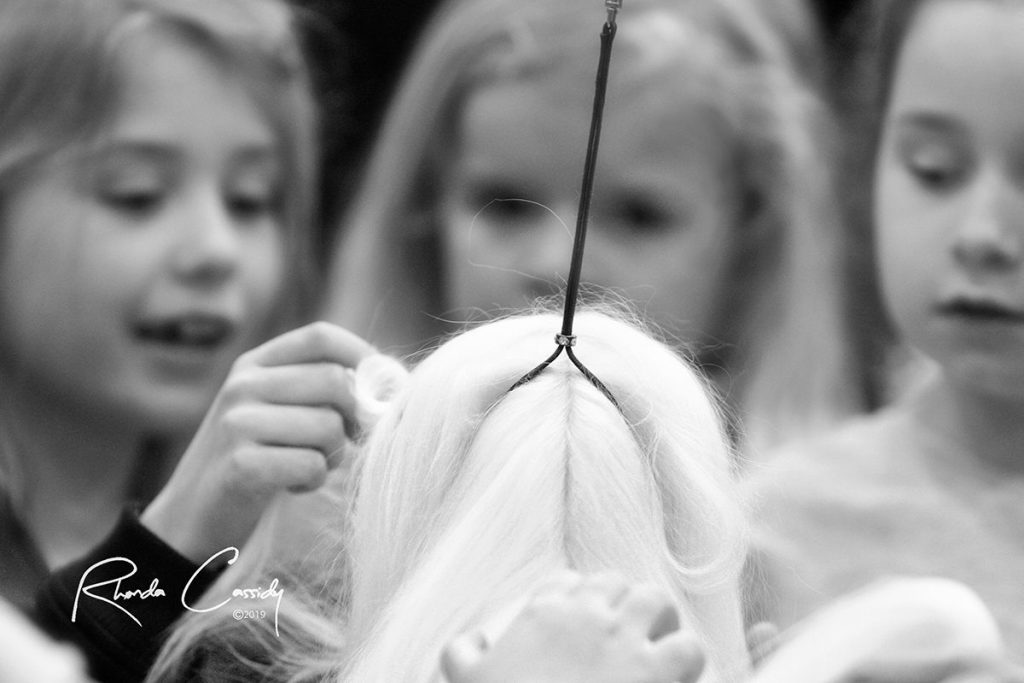465 – Allison On: Tips from the Top on Drop Coat Grooming
Allison On: Tips from the Top on Drop Coat Grooming
Allison Alexander, founder of Leading Edge Dog Show Academy and President of the Canadian Professional Handlers Association, joins host Laura Reeves to talk about grooming drop coated breeds, from maintenance to polish.
Allison’s years of experience provide enormous insight into the maintenance on coated breeds from a Maltese to a Briard. Along with professional tips on the tools of the trade…. What kind of pin brush, what type of wraps, HOW to wrap and band. We cover it all right here. Read on for just the tip of the iceberg. And click to listen to the entire fabulous conversation.
“Obviously the basics start with line brushing,” Allison said. “And one thing I will say about drop coats, and people might disagree with me, but drop coats more than any other coat type, you can’t have a bad day.
“Even a poodle in full show coat, you can skip a bath. They could get wet in a rainstorm or snowstorm and it’s midnight and you’ve driven for two days to get home and, I’m not recommending it, but you can let them get away with like towel him dry, sleeping it off overnight and starting the next day. You have a long coat, especially as single-coated long coat, and you do not have those options.
“So the commitment is like times 10 to me. There are no days off. So when it comes to line brushing to me to keep a really fully coated drop coat breed in coat, line brushing has to be something that you’re doing every day. You’re going to change those wraps every day. You’re going to change that topknot every day. You’re going to make sure that they look perfect.
“When it comes to line brushing, my kind of general rule of thumb is, the longer the coat the more coat they have, the longer the pin in the pin brush. When it comes to a single-coated drop coat, I’m going to use a brush with a slightly softer pad firmness. The double-coated drop coats, I’m going to use a brush that has a slightly firmer pad that the pins go in.
“We also know that no matter what we’re brushing, but again more important for long coats, never, ever brush the coat dry. You need some kind of brushing spray, whether it’s a brushing spray that’s just cutting down on static, whether it’s one that’s adding some kind of conditioner to the coat or whether it’s a detangling brushing spray. But they cannot be brushed dry. You’ll just keep snapping those ends off.
“When I am line brushing, I like to teach my dog to lay down on their side. Especially a drop coat because obviously, with that longer outer coat hanging down, you’re not going to get underneath. So if you’re drop coated dog is standing up, even if it’s a Skye terrier, even if it’s a Briard, how are you going to hold all of that coat up out of your way. You’re not going to be able to do that. So the first thing you can do is teach your dog to lay down on the table.
“Remember that our grooming tables are fabulous, they have non slip surfaces, but they are not the thing that our dog really wants to lay on. When I’m laying my dogs down to be line brushed, they typically have maybe a yoga mat, a grooming mat or like a thin dog bed, at the very least a nice thick bath towel underneath them. Mine typically have some kind of grooming mat and then a nice thick bath towel underneath them so that they’re comfortable. ‘Cause you’re going to be here for awhile.
“You’re going to start at the very shortest hair like as far down on the belly as you can and then I like to take the sections when I’m line brushing… so line brushing actually means going line by line through the coat… you have to create those lines. So, you’re creating those lines, typically you could use a knitting needle. I like to use a plastic rat tail comb. Some people use a metal rat tail comb, some people get really good at using their fingers.
“I like to go about a finger width between each line ’cause sometimes people are lined brushing but they’re using like 3 inches of code at a time and wondering why they’re not getting the same results so a fingers width. Obviously like on a little dog like a Maltese it probably would be my little finger and probably on a bigger dog like a Skye terrier, a Briard, it would be like a bigger finger.
“You’re going to take a layer coat, you’re going to mist it with whatever your brushing spray is, brush it with your pin brush, check it with your comb. We’re not using our comb to groom the dog because otherwise you’re going to be removing too much coat. We’re using the comb to check that we did get all the way down to the skin from one end of that line that we did (to the other.)
“Typically I’m going to go from the belly to the top line. Then I’m going to do each leg in the same manner. I don’t typically do the legs or the tail or the neck at the same time. I go from the armpit to the loin area all the way up from the belly. Then I’m going to the front leg from the bottom of the foot up. Back leg, under the tail, the tail, then the neck. It’s in sections. An it’s line by line by line.”
464 – Autoimmune Disorders: Thyroid Disease
Autoimmune Disorders: Thyroid Disease
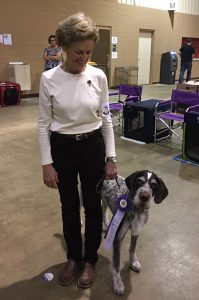
Dr. Robin Nelson, DVM and her GWP, Outlaw, CH/VC Scotian Tougher than Leather, JH, UDX.
Dr. Robin Nelson, DVM joins host Laura Reeves for a deep dive into the impacts of autoimmune mediated thyroiditis, both on individual animals and on breeding programs in general.
“The thyroid gland is a little gland on either side of the windpipe in all dogs,” Nelson said. “It is behind metabolism, so it affects nerves, organs, the brain… it is in charge of a lot of things, so presentation can vary. When I first graduated (Iowa State University, College of Veterinary Medicine), if you didn’t have a morbidly obese patient, thyroid didn’t cross your mind. It just wasn’t a concern.
“Certainly, obesity or weight gain without an explanation, without caloric intake increase (is a symptom) but even alopecia across the nose, unexplained lameness, chronic skin conditions, chronic ear conditions, vestibular disease… the list is long. Seizures, I mean if we have a dog with seizures (in the clinic), we look at thyroid function.
“The important piece of the equation, when we’re talking about thyroid, is how many different bodily systems it impacts … if your gut feeling is — ‘I’ve treated my dog skin appropriately or I’m not feeding my dog that much food that it should be overweight or here’s my dog that has loved to train, its young still, why is it all of a sudden selecting to sleep in the sunshine not firing up to do its job’ — those are all subtle (clues)… thyroid disease can also mimic all sorts of medical conditions, so trying to confirm that it’s thyroid disease is a whole ‘nother process.
“I just think if we don’t look for it, we don’t see it. It is common. As a practicing veterinarian, it is out there. There’s nothing better than diagnosing it and having your patient respond because it is so treatable and the majority of the symptoms disappear with synthetic thyroid hormone (which is) inexpensive.
“(Owners should) look for a lab that actively searches for the different numbers that you need to confirm a diagnosis. You need to make sure that the free T4 is measured by equilibrium dialysis that will allow that number not to be affected by medication, not to be affected by most other systemic disorders.
“Just as a veterinarian, I worry more about the numbers of people that don’t test at all. There are a lot of breeds with thyroid disease. I will tell you that there’s even a range, for me, looking at equivocal… I have told people, if you have an equivocal profile and everything else about your dog is so fantastic you can’t hardly stand to think that it won’t be in the gene pool, then minimally you need to really do a lot of vertical and horizontal pedigree research on both sides of the pedigree.
“There are lots of equivocals that go on to produce and I think there are lots of people who have equivocals that everything else is looking good, they just breed. But at some point, equivocal can turn into autoimmune mediated thyroiditis.
“Hypothyroidism is a process that occurs over years. A dog is not hypothyroid until about 70% of its thyroid gland is destroyed. So, you have a list of numbers that you’ve used to assess thyroid function and it’s such a gradual process … Technically, people should be testing dogs in a breeding program annually, not just taking the two year old result.”
For additional insight on thyroid disease, listen to Dr. Jean Dodds here.
463 — 4H and All-American Dogs Competing in Juniors
462 – Talk ON! Juniors and Canine Partners
Talk ON! Juniors and Canine Partners
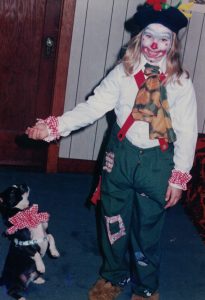 As part of Pure Dog Talk’s commitment to engaging conversations, modeling appropriate dialogue and encouraging thoughtful discussion, we are bringing you two sides of the currently white-hot topic in the dog world: AKC’s pilot program to allow junior handlers to exhibit Canine Partners in Junior Showmanship classes.
As part of Pure Dog Talk’s commitment to engaging conversations, modeling appropriate dialogue and encouraging thoughtful discussion, we are bringing you two sides of the currently white-hot topic in the dog world: AKC’s pilot program to allow junior handlers to exhibit Canine Partners in Junior Showmanship classes.
From Dog News:
At its January meeting, the American Kennel Club board of directors green-lighted a proposal from the Delegate Junior Sub-Committee and AKC staff to allow non-purebreds to be exhibited in Junior Showmanship.
The AKC pilot program is modeled after the rules used in 4-H, where mixed breeds are permitted. In order to compete, dogs must have an AKC Canine Partner number and meet the ownership eligibility criteria. Juniors will indicate the breed that the dog is being exhibited as on the entry form. So, for example, a dog entered as a Golden Retriever mix would be presented in the same way as a purebred Golden.
The rationale for allowing mixed breeds in Junior Showmanship is to provide an opportunity for a wider range of youngsters to participate in the sport of dogs, and give them an opportunity to learn, practice and improve their handling skills, as well as find mentors.
This pilot program will go into effect on July 1, 2021, and continue for 18 months before it is assessed in 2022. It is limited to all-breed shows or events holding all-breed Juniors.
Predictably, this topic has engendered heated discussion amongst the children and adults who populate this arena. Sadly, many of those conversations have devolved into the 21st century curse of ugly discourse.
As an antidote to this, we’re bringing you two weeks of conversation, devil’s advocate positions and insight from two perspectives in this debate. Listeners may or may not agree with one “side” or the other. But I firmly believe that until we *hear* one another, we can’t make progress … in anything.
Feel free to share your thoughts on the Pure Dog Talk FB page, or here in the comments. But rest assured, ANY ugliness, name calling or other inappropriate behavior will not be tolerated. Be passionate AND polite.
Today, Jody Davidson, long time Juniors coach and advocate, along with Bevin Towell, junior showmanship exhibitor, join host and moderator Laura Reeves to make the case for their position.
Next week we are joined by 4H leader and advocate Sarah Gardner for the “rebuttal.”
As always, talk ON!
461 — Genetic Ancestry – Deep Dive on Genetic Testing
Genetic Ancestry – Deep Dive on Genetic Testing
Aaron Sams, the principal scientist at Embark, joins host Laura Reeves to take us through the algorithms and data sets that create the genetic codes for each purebred dog breed.
“Dog population and dog evolutionary history is really complex,” Sams noted. “There’s a lot of dogs in the world and most of them are what we call village dogs. They are just free-breeding free-ranging dogs that live with human populations … then you have some of these ancient breeds … salukis and other what I think of as landrace breeds, these are dogs that are living with humans, they are purpose bred, they’re adapted to the region in which they live… Then you’ve got the purebred dog breeds that we are most familiar with in Europe and America.
“A registration organization decides these are the standards, this is what this dog has to conform to to be a registered purebred of this breed. But genetic variation is a lot more complex. Within each of those breeds, there are genetic variation across those dogs. They’re not clones of each other. They’re not genetically identical. A lot of breeds are related to each other.
“So it’s all pretty complex. How do you do ancestry testing and decide, given some random dog, what ancestry is the best fit for that dog? What’s our best estimate of the ancestry of that dog? So rather than thinking of it from a single reference genome, we have to think about it as a population. We have a reference database with large numbers of individuals that serve as references for that given population.
“What we’re trying to do is capture as much of that genetic diversity that represents that population as we can, so that anytime we take a new dog and we compare it to those reference individuals we can see that this dog shares DNA that’s very, very similar to those reference individuals.
“There’s different levels of genetic diversity in each of these populations. If you have a very inbred breed that doesn’t have very much genetic diversity, you might need a smaller number of individuals to capture the genetic diversity for that entire population. The more individuals you add to your reference, the more accurate you’re going to get, the more you can match those individuals that you’re testing identically.
“Let’s say you send one of your dogs in and we say it’s around 90% German wirehaired pointer and 10% English pointer … that happens. Those are very closely related breeds. Sometimes you have lineages of that breed that we don’t have in our reference database. So sometimes you’ll see that kind of thing happen. But a year later, you come back and we’ve added more registered German wirehaired pointers. Now we have dogs in our reference data set that are actually better matched for that DNA … Over time these things are going to change.
“If you take a frozen semen sample from several generations ago, say 5-6 generations in the past, then you bring that forward and you breed a dog with that frozen semen sample. If there was more outcrossing or the breed was still kind of information (when that dog was alive), there’s definitely a good chance that if we now have a very well-established reference data set for that breed, that you bring that genetic diversity forward, it may not actually be present in most dogs in that breed today. Now you’ve got ancestry or DNA from earlier in the population that’s maybe been lost over time and you’re reproducing it … if we don’t have that in our reference data set for that breed it’s going to be called as something else….”
For more on this absolutely fascinating deep dive on genetic ancestry DNA testing, listen to the podcast episode above.
460 — New Airline Regulations on Service Dogs
459 – Eurasiers: “Floofy,” quiet, mellow companions
458 — Dog Breeding: Back to Basics with Dr. Marty Greer
Dog Breeding: Back to Basics with Dr. Marty Greer
Dr. Marty Greer joins host Laura Reeves for a review of breeding basics for our bitches. How old? How often? How many Csections? What about an oops? We start with these basic questions and detour into deep dives on critical micronutrients, breed specific cysts, what dog bodies are most difficult for abdominal surgeries and much more of the fascinating exploration of knowledge with one of the country’s pre-eminent canine reproductive specialists.
At what age should I breed my bitch for the first time?
That depends on the breed. If it’s a breed that needs to have hips X rayed after the age of two, then after the age of two is appropriate. A lot of people want to wait until the bitches are older, either because they want to see what kind of health problems they have or the bitch may have a career… when we start to see people breeding when (the bitch is) six or seven years old for the first time, we struggle a lot with fertility. So my recommendation is to not wait too long. If you have a breed that you can do hips early on or don’t need to do hips or you don’t worry about seizures when they are five, then breeding young is fine.
I like to breed young bitches with a shiny pink healthy new unused straight off the showroom floor kind of not beat up and bedraggled when she’s seven years old and now you want to use this really valuable frozen semen. Please don’t do that. The higher the stress of the semen, like frozen and fresh chilled, the younger and more fertile the bitch needs to be. We can’t have a subfertile male and a subfertile female and expect to have a good outcome.
I don’t like breeding on the first heat cycle for a couple of reasons. One is they tend not to be a fertile cycle. Two is the bitch tends not to be mature emotionally or psychologically. And three is she tends not to be physically mature. So I think that pushing to breed on the first heat is not a great idea. That does that mean it doesn’t work … plenty of bitches that plan their own breedings with their own stud dogs in their house. That may have been the breeding that you planned to do after she turned 2 and she and he decided that they would preemptively do a strike.
What happens if my bitch has an accidental breeding?
You know when you get an accidental breeding, statistically it’s 62% that get pregnant 38% don’t. There are methods to interrupt those, but I generally recommend against them unless it’s a really strong reason, like a brother sister or something along those lines. We have a lot of people who are embarrassed in their breed club, they’re worried that people are going to drum them out. If someone tells you, and they have males and females that are intact in their homes, and they tell you ‘I have never had that happen to me,’ either they are lying to you or it hasn’t happened to them yet. Because at some point the sex drive is strong and males will chew through doors and females will crawl over kennels.
There are ways to interrupt pregnancy if it happens. You have three choices if you do have a mating that went better than you wanted it to. Most the time when we have people crying at the ultrasound it’s because their bitch didn’t get pregnant. Sometimes it’s because their bitch did.
You can either let her have the puppies and teach her to be a good mom. #2 is you can spay her, which of course is the end of her breeding career. #3 is there is a series of injections and oral medications that can be used that are not estrogen. So please, please, please no diethylstilbestrol, no ECP. None of those drugs. They cause bone marrow suppression and can cause your bitch to die. We can see pyometras and we still see people giving those drugs. So basically, we give prostaglandin and another oral medication. If somebody gets herself into a pickle, email me I’ll help you out. I’m not going to go through the whole protocol because it’s not really the kind of thing that we want to talk about today but there are choices for what you can do that are safe for the bitch and will not interfere with future breeding.
How often should I breed my bitch?
We did use to say skip a cycle in between (breedings) but you’re right, the uterus starts to age and progesterone is what causes the aging. So, every time she’s exposed to progesterone during each cycle and not bred, you beat up the uterus little bit more. So, breeding back to back makes a lot of sense. Now I also know from the other side of things … it takes a bitch eight months nutritionally to get back to where she was before she was bred. My middle ground on that is to breed back to back, then skip a cycle, then breed back to back again. That’s four litters in five cycles, if you’re going to breed that many times.
Secret recipe to success?
Make sure that nutritionally you really workin’ it when it comes to (nutrition). She should be on puppy food. The other information that we know is from (a) study that was done with the collaboration of Eukanuba with Canine Companions for Independence, CCI, out of Santa Rosa, CA that raises service dogs. They discovered that on a bitch’s first litter, 50% of her puppies were successfully graduating as service dogs. By her fifth litter they were down to 25%. It was determined that was a DHA deficiency, based on 5800 puppies in the study.
There really isn’t a published dose (for DHA) but basically if you use a reasonable number of capsules, like one capsule a day (of the human supplement) that makes a lot of sense. We have clients that have anecdotally reported that they think their puppies are smarter now.
It’s a fatty acid, so I typically will give it to them between heat cycles as well as during because you don’t want to wait until the very last minute to administer it. Go ahead and start it as soon as you get ahold of it. You can start it now. It’s going to help the bitches and I just give it on a daily basis.
Pay attention to this kind of nutritional micronutrient that you may or may not find in adequate levels in your pet food. Supplementing it above and beyond (what is in some puppy food) is certainly not going to hurt the bitch or the puppies.
Can a bitch whelp naturally after having a c-section?
A C-Section does not interfere with her ability to have a vaginal birth at a future breeding. Just like in people, “Vbacks,” OK vaginal birth after C-section, it’s safe for her to have another litter born vaginally if she’s had a C-section. I’ve done as many as five C-sections on one individual bitch and I don’t have a problem with that. I do try to avoid surgical breedings if it’s also a breed that’s going to have a C-section.
Seventy-five percent of C-sections are maternal causes. 25% are fetal causes. Fetal causes are things like an oversized fetus, and deformed fetus, like a walrus puppy. A puppy that malpresents, in other words it comes down and it starts to come down out of one uterine horn and instead of coming down to the cervix, it makes a U turn and goes back up into the other horn. Those are all fetal causes. Those do not necessarily mean that you’re going to need another C-section. So it’s really a good idea to have a conversation at the time of the C-section with your veterinarian to find out if they could determine the underlying cause for the C-section.
457 – Breaking the Sounds of Silence
Breaking the Sounds of Silence
Every single breeder I know has said at one point or another they want to “change the conversation.” To blunt the sledgehammer of the Animal Rights vs Animal Welfare message with John Q Public. To stand up for our legal rights. To champion the brutal hard work … the literal blood, sweat and tears shed… the labor of love we undertake in order to provide the gifts of companionship, beauty and living history to our communities.
And damn near every one of those people has turned around and bashed some other breeder of whom they disapprove for whatever reason. As a result, the “divided they fall” approach implemented by the AR playbook has been spectacularly successful.
Hello darkness, my old friend
I’ve come to talk with you again
Because a vision softly creeping
Left its seeds while I was sleeping
And the vision that was planted in my brain
Still remains
Within the sound of silence
I’ve made my resolution for 2021. We’re going to break that sound of silence. I hope you’ll all join me in this goal. I’ve grabbed a megaphone, stepped outside the holy church of “Dogdom”… I’m using the voice you’ve all given me in a determined effort to *successfully* preach *beyond* the choir.
And in the naked light, I saw
Ten thousand people, maybe more
People talking without speaking
People hearing without listening
People writing songs that voices never share
And no one dared
Disturb the sound of silence
If you haven’t subscribed to the Good Dog Pod, now is the time. I’ve joined forces with Good Dog in a determined effort to leverage reach, resources, technical skills and insight of a team who already speaks a language many of us have never known or have long forgotten. Regular Joe. Dog lover. Perhaps even “fur mommy”…. For some of us, it’s like learning Swahili. Talking AT people who don’t understand your language and culture is frustrating and has caused a great deal of misery throughout history.
The Good Dog Pod and other educational initiatives sponsored by Good Dog are aimed specifically at meeting regular people where they are. Googling Golden Retriever. While we’re over here, hiding in the “church,” chipping away at our stone tablets.
The Good Dog Pod, along with a full suite of accessible resources, is also providing education and mentorship scaled to an enormous audience of new and wannabe breeders who want to do the right thing, but don’t know what it is. Or that there even IS a “right” thing. By applying standards to ALL breeders, by celebrating and promoting breeders, by providing access and support for health testing, in just the last year they are already changing the conversation within the larger dog breeding community.
Because the reality check is, AKC and others estimate that dog owners in the US will seek roughly 9 million replacement dogs *each year*…. And that isn’t counting a pandemic. AKC breeders register something like 1 million of those dogs. So 8 million dogs are being produced with little to no access to meaningful resources. And owners are acquiring them because they CAN. Because someone answered their call and didn’t belittle them for not knowing the decoder ring secret password. Because someone spoke their language.
Education is the Answer. To Everything.
As you have heard me say time and again, education is the answer. To everything. And, if a little education is good, a LOT is definitely better.
The Good Dog Pod, with training insights, breeding, whelping and raising tips, legal advice and general dog knowledge, will continue to drop every Wednesday. You can subscribe anywhere you listen to Pure Dog Talk.
Speaking of which, YES, Pure Dog Talk IS going to continue. The Pure Dog Talk episodes will drop every Monday. Veterinary Voice, Love the Breeds, The Interviews and The Conversations will retain their focus on the world of competitive purebred dogs. The Voice of Purebred Dogs will mos def NOT be silenced.
In fact, we’re kicking off some super exciting news right here!!
Collections
FIRST, Pure Dog Talk Classic is a series of new collections, with RSS feeds of their very own, showcasing the first early episodes which currently are only available by keyword search on the website. They will also be available by specific category.
For example, currently available collections include:
https://feeds.captivate.fm/puredogtalk/the-interviews/
The Interviews
The masters, the legends and the larger than life people world wide who have influenced purebred dogs over the last 50-plus years. Preserving 20th century knowledge and presenting it in a 21st century format. Want to know about a dog show judge and what matters in their ring? Learn directly from the source. Want to build an incredible family of dogs? Learn from the giants in our tribe.
https://feeds.captivate.fm/puredogtalk/love-the-breeds/
Love the Breeds
Laura interviews the *experts* to learn about breeds from Azawakh to Xoloitzcuintli. Long-time breeders, respected authorities and devoted owners cover personality, activity levels, grooming requirements, health and longevity of their chosen breeds. Dive into the living history represented by dog breeds from around the world and across the ages.
https://feeds.captivate.fm/puredogtalk/breeding-and-whelping-hands-on/
Breeding and Whelping: Hands-On
Learn from veterinarians, master breeders, and experts about the critical nuances, best practices, and science of successfully breeding and whelping your next litter. From progesterone numbers to semen evaluation; from c-section, decisions to free whelp help; from troubleshooting to the celebration, you’ll find the answers here!
Coming in the near future: Masters in Breeding Theory, Show Ring Handling and Grooming, Performance Events, and anything else y’all want! If you have a collection request, just shoot me an email at laura@puredogtalk.com If fact, a HUGE shoutout to listener Jenna Vermette-Gerow for planting the seed of this idea in my brain!
Cyber Sweepstakes
SECOND, with the pandemic cancellations still decimating enormous swaths of our sport, particularly notable here on the west coast, where our HUGE January shows in California, Washington and Oregon are moved or removed from the calendar, we’re bringing back the Pure Dog Talk CyberSweepstakes presented by Trupanion!!
Debuted in March of this year after Louisville was shut down, with a variety of shows through the summer, I let it subside during the few months of actual dog shows that started back in Oklahoma. But I wanted to bring it back in solidarity with our local exhibitors. If you haven’t already, like the FB page of the same name for updates and details in the coming weeks.
Patrons!
THIRD, don’t forget the Pure Dog Talk Patrons! We’re hosting an event in March and another in August. These training days, seminars, and retreats are one of the major perks of joining the most supportive and welcoming circle within our tribe. For as little as $5/month, you can gain access to monthly After Dark conversations, events, insider tips and more.
Finally, join me in thanking and supporting Trupanion and Embark who elected to remain in partnership with Pure Dog Talk in providing GREAT content to the purebred dog community. And, join me in welcoming Good Dog to the family.
2020 tried to crush us. It took lives, friendships, and often sanity. It cost jobs and comfort zones. But if you’re listening to this, it means you won. You beat that bitch. You survived. You learned how strong you are. You discovered new ways, fell back on old ways, or invented whole new paths to keep moving forward. But you did it! And so did I.
So let’s all keep that momentum going into the new year. Break down the barriers. Break out of the ruts in your brain. Break the sound of silence.
Peace out …. Wishing you a blessed new year.
456 – Rhonda Cassidy: For the Love of Dogs
Rhonda Cassidy: For the Love of Dogs
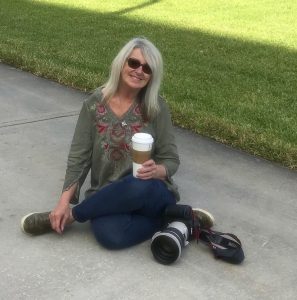 Dog show photographer Rhonda Cassidy tells the story of the intersection between her lifelong passions for dogs and art.
Dog show photographer Rhonda Cassidy tells the story of the intersection between her lifelong passions for dogs and art.
Starting with a newbie’s understanding of dog shows but a lifetime love of dogs and art, Cassidy’s humble beginning and dedication shine through her art in her forthcoming book, For the Love of Dogs.
“When I was a kid, I collected postcards of dogs,” Cassidy said. “I made a scrapbook. Back then I’d go to the library and check out every book I could find about dogs and learn about breeds … I would write stories and illustrate them.”
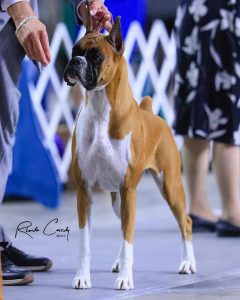 From the first photo of her Irish Water Spaniel she had published in the AKC Gazette column to photographing some of the top show dogs in the United States, Cassidy’s journey has been driven by her twin passions.
From the first photo of her Irish Water Spaniel she had published in the AKC Gazette column to photographing some of the top show dogs in the United States, Cassidy’s journey has been driven by her twin passions.
“It wasn’t something that I thought I should do,” Cassiday said. “It was something I *had* to do. It was like I had a hand on my shoulder. It said you have got to do this.”
Cassidy’s photography raises the form to an art, reaching beyond the physical specimen to capture the character, the soul of the dog.
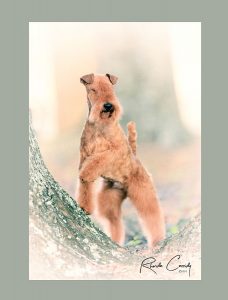 “I feel it,” she said. “I can explain it to you, but I can’t make you *feel* it… Whether it’s doing candids or ring shots, I get goosebumps… I know what I want to see and sometimes it just happens. Sometimes it doesn’t. But it’s just there for a second.
“I feel it,” she said. “I can explain it to you, but I can’t make you *feel* it… Whether it’s doing candids or ring shots, I get goosebumps… I know what I want to see and sometimes it just happens. Sometimes it doesn’t. But it’s just there for a second.
For the Love of Dogs
“I have hundreds of thousands of pictures. I wanted a collection that somebody could hold in their hands. I wanted something just for people to remember me. This was Rhonda Cassidy and here’s what she loved. This is who she is.”

